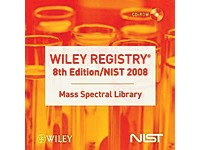Advertisement
Grab your lab coat. Let's get started
Welcome!
Welcome!
Create an account below to get 6 C&EN articles per month, receive newsletters and more - all free.
It seems this is your first time logging in online. Please enter the following information to continue.
As an ACS member you automatically get access to this site. All we need is few more details to create your reading experience.
Not you? Sign in with a different account.
Not you? Sign in with a different account.
ERROR 1
ERROR 1
ERROR 2
ERROR 2
ERROR 2
ERROR 2
ERROR 2
Password and Confirm password must match.
If you have an ACS member number, please enter it here so we can link this account to your membership. (optional)
ERROR 2
ACS values your privacy. By submitting your information, you are gaining access to C&EN and subscribing to our weekly newsletter. We use the information you provide to make your reading experience better, and we will never sell your data to third party members.
Physical Chemistry
Digital Briefs
New Software and Websites for the Chemical Enterprise
by Janet S. Dodd
July 3, 2006
| A version of this story appeared in
Volume 84, Issue 27
Software
EndNote X is bibliographic management software for researchers, librarians, and students. In Version X, users can view up to eight fields in the reference list display and can click-sort column heads to locate records quickly. PDF links are identified easily with a new PDF icon. The reference edit window now includes an option to "show and hide empty fields" to reduce scrolling through reference detail. Version X introduces a new way to manage PDFs by simply dragging and dropping a PDF file onto an EndNote record. EndNote stores the file with the references and creates a link automatically. The software is designed for Windows. Thomson Corp., www.thomson.com
Benchware 3D Explorer 2.2 is an enhanced version of software previously called Lithium for the communication of 3-D chemical information. This product allows laboratory scientists to visualize, annotate, share, and experiment with 3-D chemical structural information and the results of computational research. It has high-quality graphics, advanced molecular editing functions, and strong communication capabilities. Benchware 3D Explorer now supports visualization of pharmacophore models and 3-D molecular queries. Expanded representation of chemical structures and molecular interactions make it possible for drug discovery chemists to "see," in real time, how changes to their proposed syntheses may affect important molecular properties. The VBA scripting environment is also included as a standard feature. The software runs on Windows. Tripos, www.tripos.com
C@rol is a Web-based warehouse of chemical compounds. It allows merging of products offered by various suppliers into one system to simplify and speed the retrieval and ordering process. It features graphical input of compounds and various rapid search methods for chemical compounds, such as by structure, similarity, transformation, and 3-D pharmacophore. Search methods for chemical names and properties include IUPAC name, CAS Registry Number, molecular formula, and molecular weight. It provides various output formats for structures and data. It can be linked to the 3-D visualization applet Jmol. C@rol's server is available for common UNIX platforms, such as Linux, Sun Solaris, and SGI Irix, and for Windows; its client works with Internet Explorer 5.5 or higher and Netscape 7.0 or higher. Molecular Networks, www.mol-net.de
Felix is a software program for off-line data processing, spectral visualization, and analysis of high-resolution, one- to four-dimensional, homonuclear and heteronuclear NMR data. The data processing and spectral analysis capabilities in Felix allow the spectrometrist to transform raw data and begin the process of structure and dynamics determination based on NMR. The software features a relational database, an extensive macro language, and an easy-to-use, multi-windowed, menu-driven interface that allows for quick and easy performance of routine tasks. Felix has the ability to directly read data from all of the major spectrometers from Bruker, Varian, and JEOL. It is available as a server-side product that runs on Linux or SGI workstations and as a desktop product for Windows PCs. Accelrys, www.accelrys.com
Databases
ChemBank is a publicly available database created to enhance scientists' capabilities in drug discovery. Version 2.0 is a complete overhaul and now includes new search capabilities and extensibility features. The Web-based ChemBank includes data on drug candidates, or small molecules, and their behavior in cells selected to serve as models of human disease, especially cancer. Using ChemBank's analysis tools, investigators can query and analyze these data and may even export the raw information to perform their own analyses. By these mechanisms, ChemBank enables researchers to gain new knowledge of human disease and to identify starting drug candidates for novel therapeutics. chembank.broad.harvard.edu
Membrane Protein Data Bank (MPDB) is an online, searchable database that has select structural and functional information on membrane proteins and peptides. MPDB uses data from the Protein Data Bank and other databases, as well as from the literature. The data bank covers integral, anchored, and peripheral membrane proteins and peptides and hosts structures that are based on X-ray diffraction, nuclear magnetic resonance spectrometry, electron diffraction, and cryo-electron microscopy. Users can search for molecules by several parameters, including protein characteristic, structure method, crystallization technique, temperature, and author. The site also provides a wealth of database and search engine websites. www.lipidat.chemistry.ohio-state.edu/MPDB/index.asp
Probe Database, operated by the National Center for Biotechnology Information, is a public registry of nucleic acid reagents designed for use in biomedical research. Its latest data set involves the contribution by Applied Biosystems of more than 400,000 polymerase chain reaction primer-pair designs for about 16,000 human genes for the detection of DNA sequence variants related to disease. These resequencing primer sequences provide a rich data resource that can enable researchers to design better diagnostic tools and therapeutics for diseases. www.ncbi.nlm.nih.gov/genome/probe







Join the conversation
Contact the reporter
Submit a Letter to the Editor for publication
Engage with us on Twitter